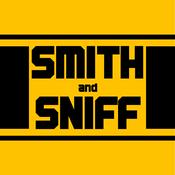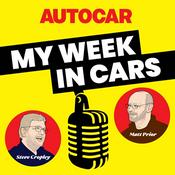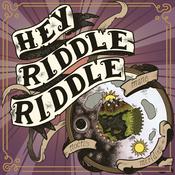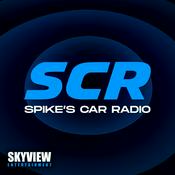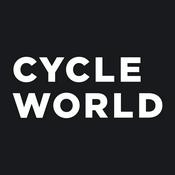56 episodes
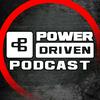
What It Really Takes to Make Reliable High Horsepower Diesels
16/12/2025 | 1h 1 mins.
This one turns into a battle royale fast, with Myer and John wasting no time getting into a heated shop floor debate about extreme diesel performance and what really works when you are pushing the limits.The conversation dives straight into drag racing setups, large single turbo strategy, and the tuning challenges that show up when you are chasing real, repeatable power. A major focus is why mechanical injection setups often seem to extract more out of big single turbos compared to common rail, especially when dyno testing at higher elevation. For diesel enthusiasts who actually build, tune, and race their trucks, this matters because it directly affects spool, drivability, consistency, and whether a setup survives repeated passes or starts melting parts.One of the key discussions centers around a fuel only goal of 1,500 horsepower on a 6.7 Cummins running a 98mm GT55 style turbo. They break down how the dyno testing process worked by starting with low fuel quantity and timing, then gradually stepping things up until timing stopped making gains and fuel became the deciding factor. Myer explains why pushing past that range started to hurt the truck’s manners and why nitrous became the tool for setting peak power while keeping the truck responsive and controllable instead of lazy and unpredictable.They go deeper into why large single turbos struggle more at altitude, particularly on common rail trucks that burn fuel so efficiently in cylinder that there is not enough heat left to drive the turbine. The discussion covers attempts to tune around that limitation, including lowering rail pressure to mimic a more 12 valve style burn, the dangers of overfueling a big single, and why once the setup falls off there is often no saving it mid pull. They also talk through future plans like switching to a ten bar map sensor, experimenting with pressure and timing, and trying to find the balance between clean combustion and enough exhaust energy to keep the turbo lit.Real world shop experience is layered throughout the episode, including nitrous strategy for drag racing, why compound setups can feel more foolproof even with the added weight, and a nitrous backfire that blew an intake pipe off and dented a hood during testing. If you are into diesel performance, Power Driven Diesel shop talk, Cummins builds, VP44 discussions, dyno testing, turbo upgrades, drag racing, and truck builds, this episode delivers straight insight from guys who live it. Subscribe for more episodes and stay locked in with everything happening at Power Driven Diesel.

Build A 1000HP 12V Cummins That Actually Drives
09/12/2025 | 1h 1 mins.
We break down how to build a clean street friendly 1000 horsepower 12 valve Cummins without the smoke show or sketchy manners. This Power Driven Podcast features Meyer with guest John Schroeder from Black Tie Race Fab, and the crew gets real about what it takes to cross four digits while keeping a truck fun in town, on the dyno, and at the strip. Instead of throwing the biggest parts at a 12 valve, they walk through the combination that actually works in diesel performance, from engine foundation and timing to turbo sizing, compound setups, fuel supply, and boost control.The first myth they crush is the idea that a giant 13 millimeter pump and huge injectors are mandatory. A well planned 12 millimeter with a 215 pump’s timing advance often makes more usable power with better manners. Too little timing creates what they call phantom boost because the burn finishes in the manifold, not the cylinder. Add sensible timing and boost can drop while power climbs because the work happens in the chamber where it belongs. On the hard parts, rods and rod bolts are smart for a torquey street combo, and the Junker’s proven recipe shows what survives at this level with piston to wall around ten to eleven thousandths and a wider top ring gap. Up top, a ported head with fire rings keeps power up and intercooler boots alive when boost hits triple digits, and quality valve springs with a moderate cam keep rpm happy without turning the truck into a picky race piece.Turbo sizing is where street trucks win. Oversized fuel with lazy air equals smoke and frustration. The team explains how a small responsive manifold charger like a 62 paired with a large atmosphere charger such as an Aggressor 98 on a GT55 lights early, pulls hard, and still delivers four digit results. Wastegate control can swing total boost from roughly the mid one hundreds down near one hundred without always adding power, which proves that airflow quality beats a big number on the gauge. Fuel supply is its own power adder on a P pump. You need volume to flush aeration between injection events, whether that is a strong mechanical lift pump or a smart boost referenced electric. An adjustable pump gear is cheap insurance against slipped timing and makes fine tuning fast and repeatable.If you care about Cummins tuning, dyno testing, turbo upgrades, drag racing, and real world truck builds, this episode delivers with takeaways like compound turbo street setup, 215 pump timing advance, lift pump volume for a P pump, and a ported 12 valve head with fire rings. Subscribe for more and follow Power Driven Diesel for the builds, parts, and testing that make these trucks fast and fun.

What Comes Next For Diesel Drag Racing??
02/12/2025 | 1h 8 mins.
One spec turbo, instant green starts, and a purse swelling toward one hundred grand turned this class into the wildest storyline in diesel drag racing.This episode of the Power Driven Podcast is hosted by Will and jumps straight into the future of diesel motorsports with Josh and Myers in the room. The crew uses the 72 Fast class that runs alongside UCC in Indianapolis as the case study for where the sport is heading and why it matters to anyone who cares about diesel performance and the community that builds, tows, tests, and races these trucks.They lay out the rules that make this thing so fierce. Every entry runs a VS Racing seventy two eighty T4 turbo and must weigh a strict six thousand pounds with no tolerance. It is fuel only, so no nitrous, no injectables, and no water to air intercoolers except where a factory six seven Power Stroke came with one. Factory pumps are required, a factory ECM is mandatory even if you swap brands, and there is no trans brake. There is a parc ferme style impound between rounds, no test passes in the days before the event, and an instant green start on race day. The entry options even included a package with the turbo, the purse began at fifty thousand, contingencies piled on, and the total payout grew toward one hundred thousand as the entry list capped at one hundred thirty five.From there it gets technical in all the right ways. The guys explain why common rail tuning windows and cylinder head airflow are a real edge over a twelve valve, how port velocity and reversion affect turbo efficiency, and why a P pump setup benefits from a larger turbine to deal with heat and drive pressure. Expect everything from eight or nine hundred horsepower to well past a thousand, and on an eighth mile you could see anything from six eighties to possible high fives depending on weight, power, and the leave. With foot brake only and an instant green tree, reaction time and a clean launch can beat raw power, which is exactly why this format pulls in racers from street truck roots to serious shop builds.Culture and logistics get their due as well. Burnout pits are drawing bigger crowds because fans can stand close and feel the noise and smoke, which makes them a real part of the show. There is talk of bringing an air limited, fuel only class out West, maybe pairing it with dirt drags or a street weight sled pull so the barrier to entry stays low. The no time format keeps scoreboards dark, but the tower still sees times and track officials have the final say, a reminder that safety, licenses, and sportsmanship still matter when serious money is on the line. Contingency bounties add even more spice, including brand versus brand bonuses when one platform sends another home.If you live for diesel performance, Power Driven Diesel tech, Cummins talk, VP44 history, dyno testing, turbo upgrades, drag racing, and truck builds, this conversation is packed with shop floor reality and race day strategy. Long tail topics woven throughout include 72 Fast class rules at UCC, VS Racing seventy two eighty spec turbo details, six thousand pound minimum weight, factory ECM only with no trans brake, instant green fuel only diesel drag racing, no test pass rule with impound, and eighth mile strategy on a budget.Subscribe, drop your take in the comments, and follow Power Driven Diesel for more episodes that keep you in the lanes and in the shop.

Back to the Basics of Diesel Power
25/11/2025 | 59 mins.
Diesel really is king when it comes to doing real work, and in this episode of the Power Driven Podcast the crew slows things down and explains why in plain language. The whole conversation kicks off because a viewer told them they were talking over his head, even though he is a car guy, so they decided to go back to basics, talk in a way everyone can follow, and break down why they love diesels, why they are better for work, and where all the old misconceptions came from.They start by going back to the nineteen seventies oil embargo, when fuel prices spiked and Oldsmobile rushed out those early diesel car engines that were basically gas designs turned into diesels. Those things were slow, unreliable, non turbo junk, and that is where the idea that diesels are noisy, smoky turds really stuck. From there they walk through why modern diesel performance is a completely different world. Higher compression ratios, no throttle blade to choke airflow, and a huge usable air fuel ratio range all add up to better efficiency and better fuel mileage. They talk real numbers on air fuel ratio for gas versus diesel, explain pumping losses, and compare BTUs in diesel and gasoline so you understand why ships, trains, and semis all run on heavy fuel and diesel instead of gas.The episode then moves into torque, dyno behavior, and how turbos change everything. The guys explain why a diesel can live all day in that sixteen hundred to twenty six hundred rpm power band and still pull hard, while a gasoline tow rig has to scream and constantly downshift to make the same horsepower. They dig into how turbochargers effectively multiply engine size, why compound turbos on a Cummins let you add air, run leaner, and pick up big power on the dyno without adding more fuel, and how that shows up on the road when you are towing a trailer up a grade. There are real towing stories about EcoBoost and half ton gas trucks struggling with plugged converters and heat, compared to turbo diesels that just chug along and even get more efficient as you add load. They also touch on modern emissions systems, cold running exhaust, short trip driving, and why older seventies diesels feel weak while newer pickup and semi truck engines are built robust with heavy rods, pistons, and high pressure fuel systems that make serious diesel performance possible.If you are into Power Driven Diesel tech talk, Cummins trucks, dyno testing, turbo upgrades, drag racing with tow rigs, or just want a clear diesel vs gas towing and fuel economy explanation, this back to basics episode is a solid listen. Subscribe for more Power Driven Podcast episodes, follow along for more diesel performance content, and keep up with the latest truck builds, towing tests, and shop stories from Power Driven Diesel.

Scrat Is Going to UCC 2026: Second Gen Dodge Build Plan
18/11/2025 | 56 mins.
Scrat, a 1996 second gen Dodge, is headed to the Ultimate Callout Challenge 2026 with Myer at the wheel, and the plan is simple. Build it in the shop, keep it serviceable, and make it live through the dyno, the drag strip, and the sled pull.This episode of the Power Driven Podcast features Will and Todd with Myer talking through the UCC plan, why it matters to diesel fans, and how it stacks up against King of the Streets. The focus is on real shop work, quick turnarounds, and a strategy that favors reliability without taking the fun out of pushing hard.Scrat is getting a back half and four link while keeping a steel cab and a straightforward layout. The goal is to be around four thousand six hundred pounds with driver, chase a five forty in the eighth mile, and make a strong dyno number with a clean nitrous plan. Tuning talk stays practical, from common rail control to the debate between an 06 to 07 Bosch 849 and a Bosch motorsport standalone, with Haltech pieces already in play. Transmission work is front and center as well, taking lessons from Josh and The Godfather into a forty eight based setup aimed at holding power without slipping.The conversation hits safety and prep too, from blown tire lessons on the chassis dyno to smarter safeguards that do not get in the way of a good pull. Competition looks stout with names like Lenny Reid in the mix, which is exactly the kind of field that makes UCC worth the grind. Testing in Vegas, engine work in house, and steady progress updates will lead up to the first week of June 2026.If diesel performance, Cummins power, dyno testing, turbo upgrades, drag racing, and real truck builds are your thing, subscribe to the channel, follow the Power Driven Podcast, and keep up with Power Driven Diesel as Myer gets Scrat ready for the Ultimate Callout Challenge.
More Leisure podcasts
Trending Leisure podcasts
About Power Driven Podcast
Listen to Power Driven Podcast, 自我进化论 and many other podcasts from around the world with the radio.net app

Get the free radio.net app
- Stations and podcasts to bookmark
- Stream via Wi-Fi or Bluetooth
- Supports Carplay & Android Auto
- Many other app features
Get the free radio.net app
- Stations and podcasts to bookmark
- Stream via Wi-Fi or Bluetooth
- Supports Carplay & Android Auto
- Many other app features


Power Driven Podcast
download the app,
start listening.






